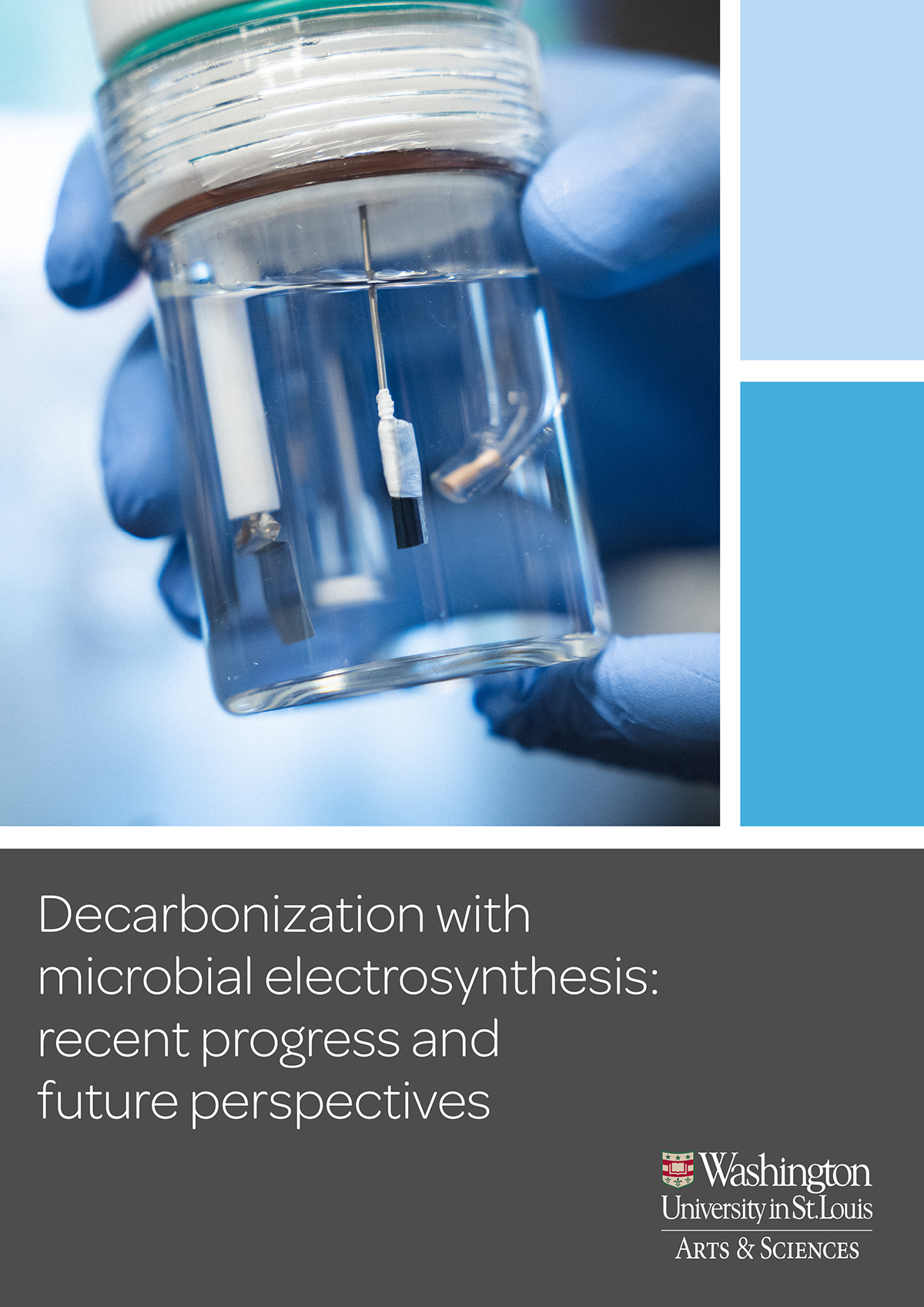Eric Conners, Arpita Bose and Prem Prabhakar at the Department of Biology, Washington University, discuss microbial electrosynthesis – a way of creating commercially significant bio-commodities
The challenges posed by climate change are numerous and significant. Tackling them will require responses at the level of policy, culture, and technology.
One of the most valuable tools available to us has the advantage of almost 4 billion years of modification and fine-tuning via evolution: biology. By taking advantage of biological phenomenon that occur in our own backyard, we can build technologies that will revolutionize our economies.
Integrating biology within supply chains is hardly a new feat. From the relatively simple fermentation processes that produce beer and wine to the more complex biorefineries that generate fuel, energy, and other compounds, we are well-equipped to implement novel biotechnologies at industrial scales.
One such technology is microbial electrosynthesis, or MES. MES takes advantage of bacteria that consume electrons in bioelectrochemical systems. By feeding electricity to these microbes, we can produce a range of bio-commodities such as bioplastic and biofuel. The carbon feedstocks might range from greenhouse gases such as carbon dioxide to other organic carbon-rich wastes.
Here, Dr. Arpita Bose, Eric Conners, and Prem Prabhakar discuss the use of bacteria to synthesize commercially significant compounds using MES. MES promises to be an important part of our sustainable toolkit, though several challenges remain. Addressing these bottlenecks in the laboratory will allow us to move closer to industrial deployment.
Dr Arpita Bose said: “Though we continue to deepen our understanding of EEU in TIE-1, other EEU-capable bacteria await discovery. We recently demonstrated that EEU is prevalent in marine anoxygenic phototrophic bacteria, and ongoing work in our laboratory seeks to identify more EEU-capable microbes and characterise the molecular mechanisms responsible for this process.
“We suspect that these “electrotrophs” are ubiquitous in nature and that novel electron uptake mechanisms await discovery.”
To learn more about using microbes that eat electricity to fight climate change, read more here.


